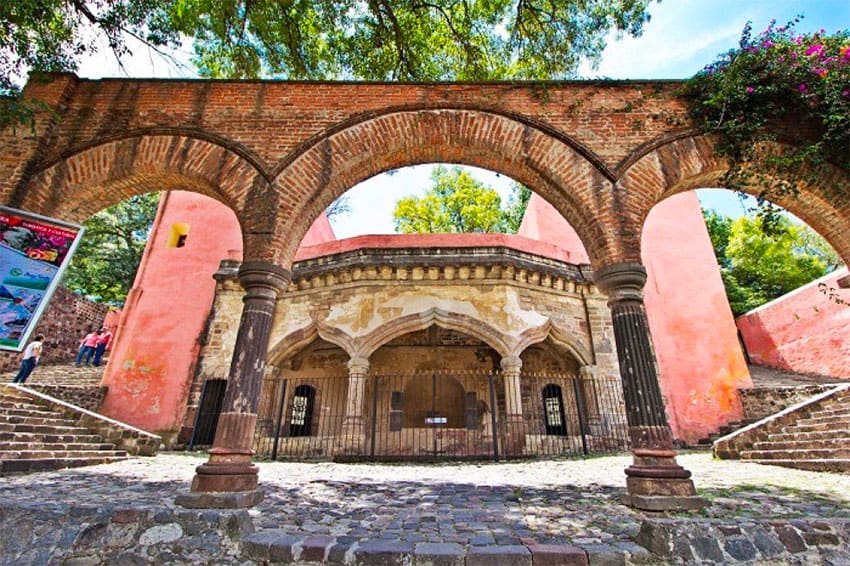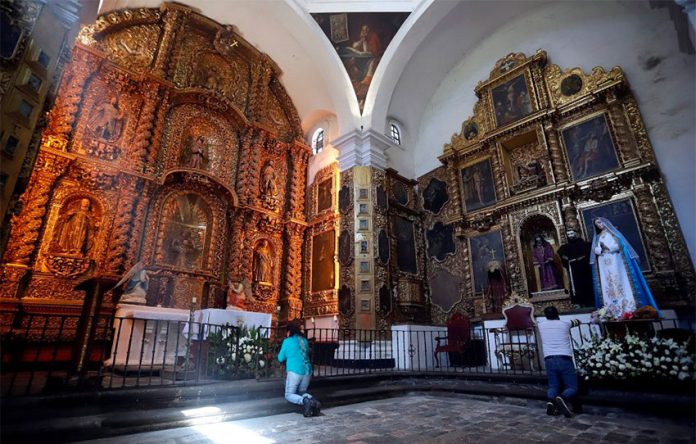The United Nations Educational, Scientific and Cultural Organization (UNESCO) has added the Tlaxcala cathedral to its World Heritage list.
The organization’s World Heritage committee announced Tuesday that it had included the Franciscan Ensemble of the Monastery and Cathedral of Our Lady of the Assumption of Tlaxcala in its existing World Heritage site known as “Earliest 16th-Century Monasteries on the Slopes of Popocatépetl” volcano.
UNESCO noted that the cathedral and monastery were part of a construction program launched by Spanish colonizers in 1524 for the evangelization of Mexico.
“The ensemble is one of the first five monasteries established by Franciscan, Dominican and Augustinian friars, and one of three still standing. The other two are already inscribed on the World Heritage List,” UNESCO said.
With the addition of the Tlaxcala cathedral and monastery, the slopes of Popocatépetl World Heritage site, which was established in 1994, now consists of 15 monasteries. Eleven are located in Morelos and three are in Puebla.

“The Tlaxcala ensemble of buildings provides an example of the architectural model and spatial solutions developed in response to a new cultural context, which integrated local elements to create spaces such as wide atria, and capilla posa chapels,” UNESCO said.
“The edifice presents two other particular features, a free-standing tower and a wooden [Islamic-style] mudéjar [roof] not found in the other monasteries already inscribed on the World Heritage list … It contributes to a better understanding of the development of a new architectural model that influenced both urban development and monastic buildings until the 18th century.”
The colonizing Spaniards’ alliance with the native Tlaxcalans helped them gain permission from indigenous groups to build cathedrals and monasteries in central Mexico during the early days of the colony known as New Spain.
The Tlaxcala cathedral and monastery was largely built with the labor of indigenous people, who learned carpentry, sculpture and goldsmithing skills, among others, from the Spanish.
The Tlaxcala cathedral was the first in the region to be built in the renaissance architectural style, and it is also considered an early example of new-Hispanic, or viceregal, art. Other examples followed, including the church in Huejotzingo, Puebla, which is part of the existing World Heritage listing.
From the beginning of the relationship between Spanish evangelizers and indigenous people in the land now known as Mexico “a very particular” style of art emerged, said Francisco Vidargas, deputy world heritage director of the National Institute of Anthropology and History (INAH).
Their collaboration was “fundamental” for the construction of religious buildings in the Puebla-Tlaxcala area, he said.
Mexico’s 16th century monasteries are among “the most original artistic and architectural contributions of Iberian American art,” said INAH world heritage director Luz de Lourdes Herbert.
There are pre-Hispanic elements on the walls of the Tlaxcala cathedral and monastery, Vidargas said.
The religious complex was not built over a ceremonial or sacred pre-Hispanic site, as was the case with some churches built in colonial days, but is located near a water spring that was sacred for the ancient tlaxcatecas.
The Tlaxcala cathedral and monastery were among 14 new additions to UNESCO’s world heritage list this week. The other newly inscribed sites are in India, Iran, Japan, Romania, Jordan, Côte d’Ivoire, France, Brazil, Peru, Uruguay, Chile, Germany and the Netherlands.
Mexico has 35 UNESCO World Heritage sites including the historic center of Mexico City and Xochimilco, the archaeological zone of Paquimé in Chihuahua and the Monarch Butterfly Biosphere Reserve in Michoacán and México state.
With reports from El País
